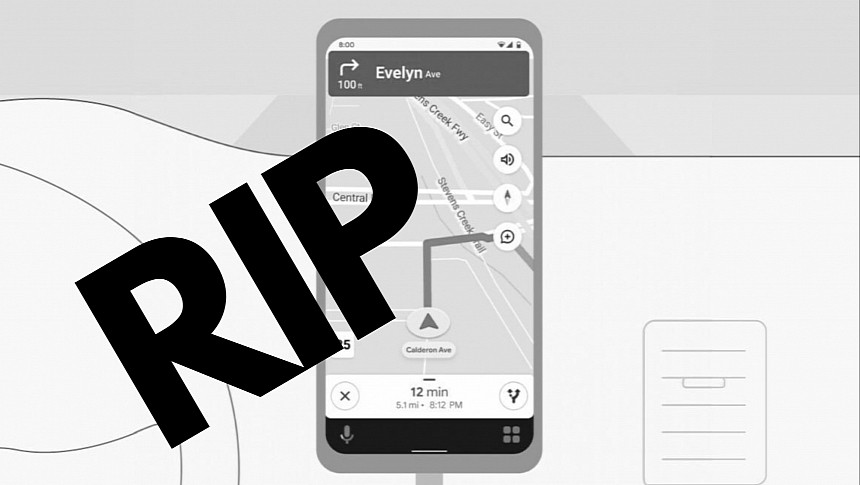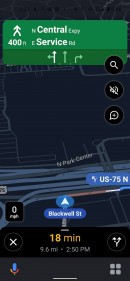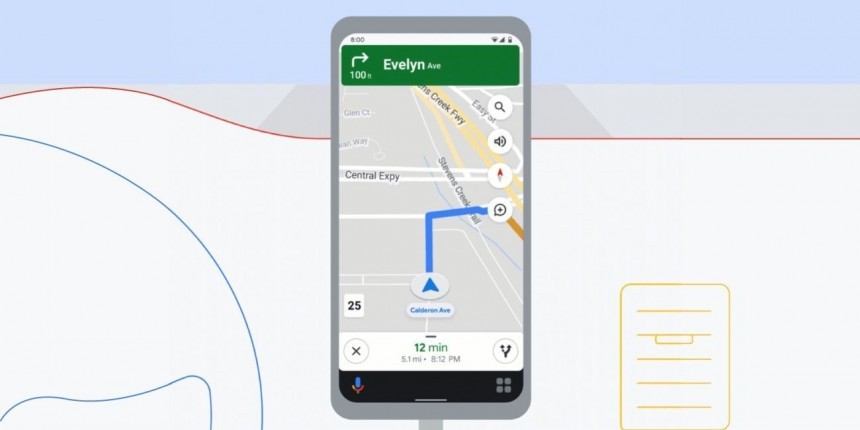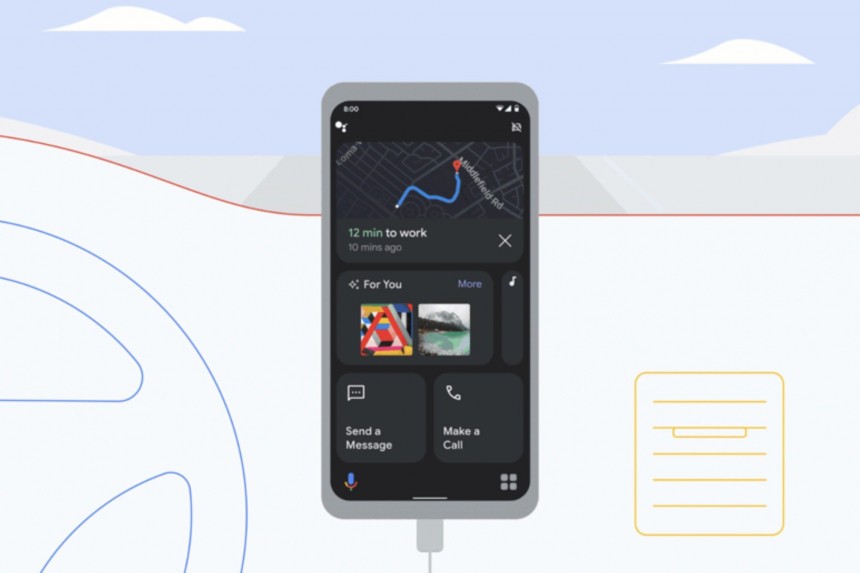Google keeps working on refining the experience with Google Maps, and the strategy doesn't only come down to adding new features.
It also involves dropping functionality that no longer makes sense or that users rarely rely on, as Google is known as a company not afraid of killing off features or products.
Google has already announced a bunch of new features coming to Google Maps in 2024, but the next big change will actually happen in February. And it'll be a feature deprecation.
The search giant will kill off the driving mode bundled with Google Maps, as it's now planning a simplified strategy that no longer includes a separate component specifically aimed at drivers.
Here's everything you need to know about Google Maps' driving mode going away.
The driving mode was originally meant to replace a popular Google product the company decided to ditch despite users' feedback. Android Auto for phones allowed users to run Android Auto on their mobile devices even if their cars didn't come with a compatible infotainment unit.
The smartphone became the infotainment unit, as the application replicated the Android Auto experience on its screen, along with compatible apps, the interface, and everything else you get when driving a car with phone mirroring software.
Android Auto for phones rapidly became a very popular product, so users strongly opposed the strategy when Google announced its intentions to retire it. Android Auto for phone screens bit the dust eventually, with Google introducing the driving mode, a new solution whose main role was to turn the mobile device into a driving companion.
It still lacked many features bundled with Android Auto for phones, including the familiar UI that brought it in sync with the full Android Auto experience, so its adoption was low.
Users weren't very excited about the new driving mode for multiple reasons, including Google Maps serving as the only navigation solution. Like the full Android Auto version, Android Auto for phones also supported other navigation apps, including Waze.
The driving mode was originally bundled with Google Assistant, offering a dashboard for one-tap access to essential driving tasks. Users could easily launch navigation, control the music playback, make a phone call, send a message, or send a voice command to Google Assistant. The dashboard made sense from an ease-of-use perspective, but users who wanted the Android Auto experience weren't impressed with the dashboard.
It was a matter of time until Google removed the dashboard, eventually making the driving mode a simplified feature in its lineup. The driving mode waved goodbye to Google Assistant and turned Google Maps into its home, focusing almost completely on navigation.
The new "driving mode" was essentially a small panel at the bottom of the Google Maps navigation interface where users could see the playing song, control the playback, launch Google Assistant with a tap on the mic icon, or access more features that made sense while driving.
The driving mode is now going away. Evidence found in previous Google Maps builds suggested that February is the month when the search giant would begin the deprecation, with the process likely to take place in stages.
However, I don't expect the driving mode removal to take too long. Google will probably display a notification inside Google Maps to inform users about the deprecation before ripping off the band-aid and removing the driving mode once and for all.
Google Maps will likely stick with a more simplified navigation approach that will rely on the main turn-by-turn guidance experience bundled with features powered by Google Assistant. Voice commands will continue to be offered to Google Maps users, as they will be allowed to launch Google Assistant using the typical methods, including a voice request.
The Google Assistant integration has already received a facelift in Google Maps, as drivers can now use shortcuts to set navigation to certain points of interest, such as restaurants, gas stations, and coffee places, much faster. Furthermore, Google has also refined the shortcuts at the top of the Google Maps interface to make more sense for drivers according to their vehicles.
EV owners will no longer see buttons for "gas stations." If they configure Google Maps with an EV profile, the application displays a "charging station" button.
Google Maps is also projected to receive other big updates this year, including 3D buildings on Android Auto, support for saving the parking place on the infotainment screen, and an expansion of Immersive View for routes. Google keeps working on bringing more new-gen features to more users, too, including eco-friendly routing, already launched in Europe, the United States, India, and other regions.
With eco-friendly routes, Google Maps suggests more efficient routes to a destination, considering more factors when generating directions. The goal is to reduce fuel consumption and cut vehicle emissions, eventually lowering the carbon footprint of the vehicles running Google Maps.
Google has already announced a bunch of new features coming to Google Maps in 2024, but the next big change will actually happen in February. And it'll be a feature deprecation.
The search giant will kill off the driving mode bundled with Google Maps, as it's now planning a simplified strategy that no longer includes a separate component specifically aimed at drivers.
Here's everything you need to know about Google Maps' driving mode going away.
The beginning
The smartphone became the infotainment unit, as the application replicated the Android Auto experience on its screen, along with compatible apps, the interface, and everything else you get when driving a car with phone mirroring software.
Android Auto for phones rapidly became a very popular product, so users strongly opposed the strategy when Google announced its intentions to retire it. Android Auto for phone screens bit the dust eventually, with Google introducing the driving mode, a new solution whose main role was to turn the mobile device into a driving companion.
It still lacked many features bundled with Android Auto for phones, including the familiar UI that brought it in sync with the full Android Auto experience, so its adoption was low.
The change
The driving mode was originally bundled with Google Assistant, offering a dashboard for one-tap access to essential driving tasks. Users could easily launch navigation, control the music playback, make a phone call, send a message, or send a voice command to Google Assistant. The dashboard made sense from an ease-of-use perspective, but users who wanted the Android Auto experience weren't impressed with the dashboard.
It was a matter of time until Google removed the dashboard, eventually making the driving mode a simplified feature in its lineup. The driving mode waved goodbye to Google Assistant and turned Google Maps into its home, focusing almost completely on navigation.
The new "driving mode" was essentially a small panel at the bottom of the Google Maps navigation interface where users could see the playing song, control the playback, launch Google Assistant with a tap on the mic icon, or access more features that made sense while driving.
The end
However, I don't expect the driving mode removal to take too long. Google will probably display a notification inside Google Maps to inform users about the deprecation before ripping off the band-aid and removing the driving mode once and for all.
Google Maps will likely stick with a more simplified navigation approach that will rely on the main turn-by-turn guidance experience bundled with features powered by Google Assistant. Voice commands will continue to be offered to Google Maps users, as they will be allowed to launch Google Assistant using the typical methods, including a voice request.
The Google Assistant integration has already received a facelift in Google Maps, as drivers can now use shortcuts to set navigation to certain points of interest, such as restaurants, gas stations, and coffee places, much faster. Furthermore, Google has also refined the shortcuts at the top of the Google Maps interface to make more sense for drivers according to their vehicles.
EV owners will no longer see buttons for "gas stations." If they configure Google Maps with an EV profile, the application displays a "charging station" button.
Google Maps is also projected to receive other big updates this year, including 3D buildings on Android Auto, support for saving the parking place on the infotainment screen, and an expansion of Immersive View for routes. Google keeps working on bringing more new-gen features to more users, too, including eco-friendly routing, already launched in Europe, the United States, India, and other regions.
With eco-friendly routes, Google Maps suggests more efficient routes to a destination, considering more factors when generating directions. The goal is to reduce fuel consumption and cut vehicle emissions, eventually lowering the carbon footprint of the vehicles running Google Maps.





















